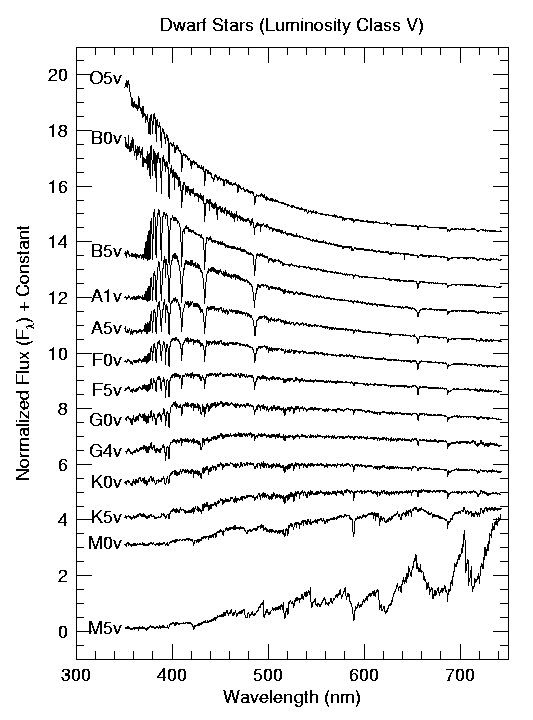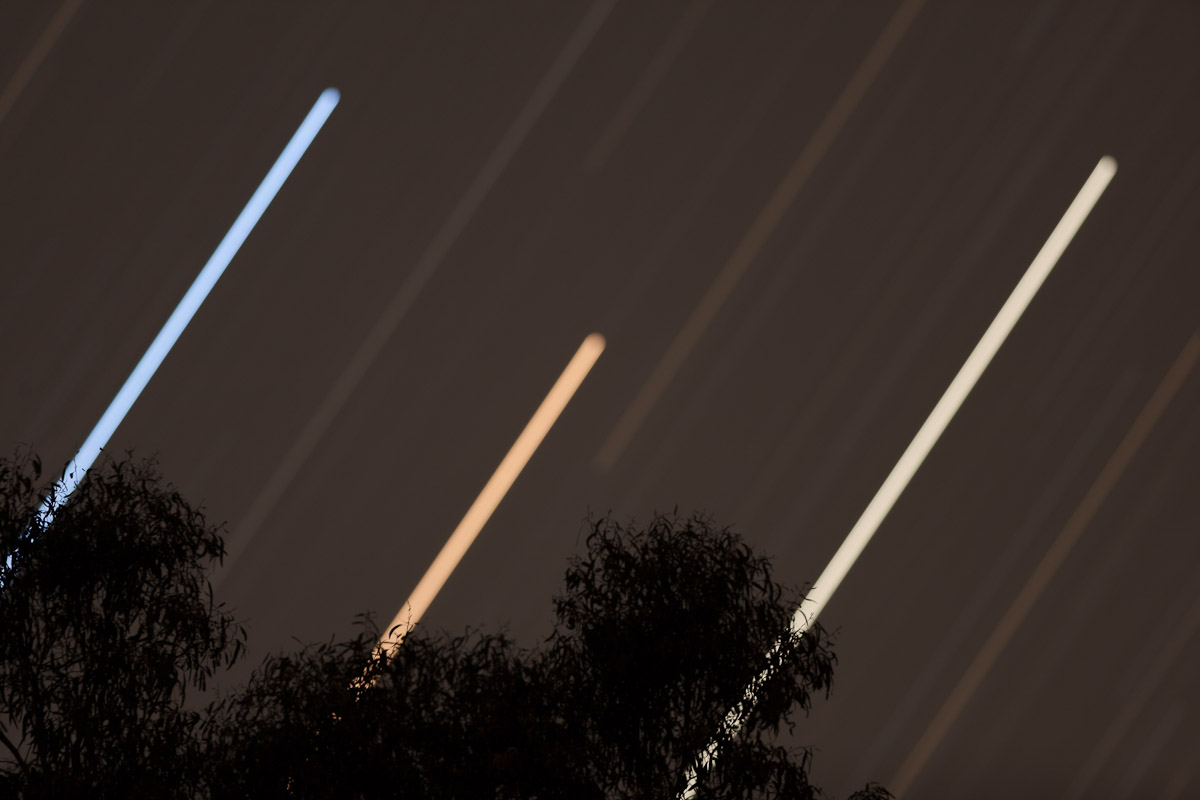Ann wrote:I disagree. Astrophotographer David Malin once said that A0-type star Vega, at about 10,000K, is about the same blue color as the Earth's sky.
Does he live on the coast?

This is bound to be in error, unless the sky he sees is desaturated blue.
The following illustrates that, perhaps, around 75,000K (Planck distribution) temperature will produce the color ratios that come reasonable close to a blue sky spectrum I found. [The blue sky spectrum, I suspect, is of an AM1 (coastal) spectrum. I have seen blue sky SEDs that have higher blue end levels. It took over 10 million deg. (Planck) to match one that I found.]

Notice that Spica certainly favors blue, but it is not quite a "blue sky" match. The image by Phil Hart is also a bluish-white color, and not a deep saturated blue. So I don't want to overstate the case.
Bear in mind that the Earth's sky is not a pure blue color in any way. All the colors of the Sun scatter in the atmosphere, although the shortest wavelengths scatter far more efficiently than the longer wavelengths. The sky is a light shade of blue, not a saturated shade of blue.
Yes, and altitude makes a considerable difference. There are some interesting stories of the mountain trips from those that took measurements using a cyanometer.
That is precisely because the blue photons that reach us from the clear sky are mixed with violet, green, yellow and even a few orange and red photons, so that the color of the sky is diluted and light. That's what makes the Earth's sky similar in color to the hot stars: their light, too, is predominantly, but certainly not purely, blue.
Rayleigh Scattering explains most of the blue color, especially when the sun is high in the sky. Ozone absorption explains a great deal more, in my opinion, for the blue sky overhead when the sun is near the horizon. Selective scattering, at times, can also alter the sky slightly.
This diagram shows the "relative color" of stars of different spectral classes. No star emits just one color, so their "combined color" is a mix of many wavelengths.
That is an interesting chart. It also helps show why the Sun is white and not yellow. The normalization, however, does distort the true color proportions.
be seen from the diagram, however, O-type and early B-type stars (like Spica) emit far more blue (short-wave) than red (long-wave) light. The opposite is true of the M-type stars: They emit far more red than blue light, although even their light is far from a pure red.
Yes. Also, the hotter the star, the more likely its spectral energy distribution will come close to matching a Planck distribution. The very cool T-type stars can have some bizzare spectrums due to the higher molecular content in their atmospheres. One T-type appeared maroon because only the blues and red were the dominant colors.
The spectra have probably been adjusted somewhat for clarity, but one thing is certain: Hot stars emit far more blue than red light, and there is no reason why their color should not be compared with that of the Earth's sky.
It is best to actually compare their spectra to know. Perhaps there are better spectra than the one I used above, but I think it is reasonably accurate.
But hot stars so rarely look blue. Why not? It's because the "blue light detectors" in our eyes don't work well when lighting is faint. Stars are almost always too faint to really trigger any response in the "blue detecting cones" in our eyes. On the other hand, our color-blind rods respond rather strongly to blue (and green) light. Therefore, when we look at a hot star, our blue-detecting cones will not respond much (or at all), but our color-blind rods will react and create the impression of colorless (white) light.
The spectral receptivitiy of the eye is a little weak with blue, but not that much. The bigger issue is that hotter stars produce not only more blue but more of all the other colors, too. This is why you have to get to temperatures above star temperatures to have any hope of getting a saturated blue. Bluish-white stars are a different story, and the Phil's image, and others, demonstrates it.
... But in a hot star, the light is so "concentrated", and the surface brightness is so extremely high (much, much higher than the surface brightness of the Sun) that the intrinsic blue light of the star easily gets "burnt out", so that the star looks white again.
The Sun has a surface brightness, I think, of about -20 mag. sq. arc minute -- one square arc minute is the approx. the resolution of the eye. Spica, therefore, has an apparent surface brightness about 250 million times less than that of the Sun.
But in today's APOD, the concentrated light of Spica has been "spread out over a much larger area", clearly revealing the blue color of Spica.
Yes, cameras, with their greater exposure time ability, do cause the whitening effect you describe above, so the spreading makes a huge difference in helping us see their color.
So there is nothing wrong with the blue color of Spica in this picture, although it's true that you can't expect to see this very obvious color either with the naked eye or with the aid of a telescope.
Since the image does show it as bluish-white, it is fairly close, but still more blue than I would expect
 Conjunction Colours
Conjunction Colours



